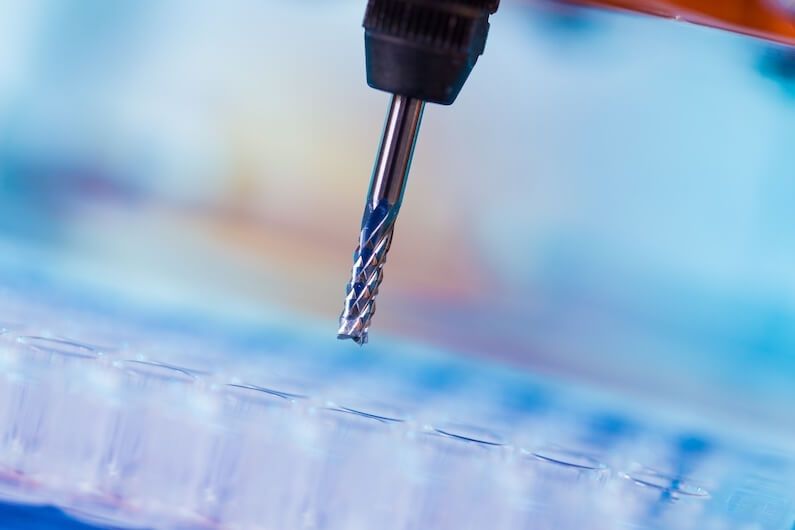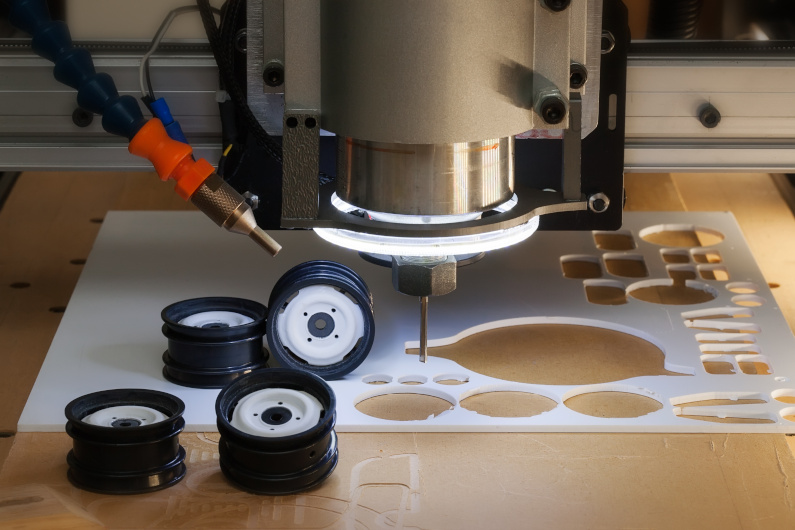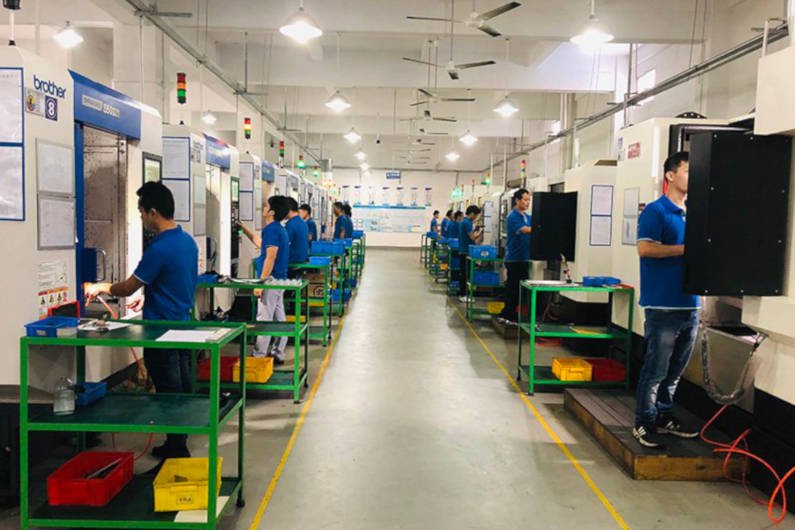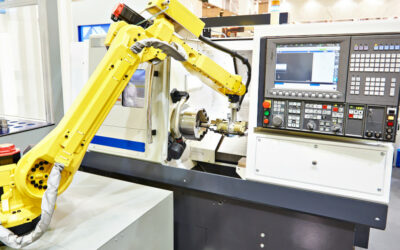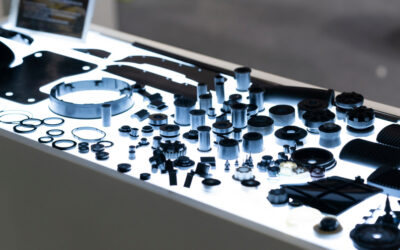Companies around the world use CNC machining to craft high-quality components from diverse materials like ceramics, wood, and composites. Metal and plastic take the forefront in mass production, with metals enjoying wider machinability. Machinists can adeptly tackle issues in metals by adjusting speeds, feeds, tools, and more.
However, plastics prove a distinct challenge. Methods effective on steel, brass, aluminum, and titanium struggle to yield the same outcomes. Resulting are subpar finishes and imprecise dimensions, causing rejection of numerous parts.
Understanding the unique complexities of plastic machining and common pitfalls is crucial. This article presents key insights into mastering plastic CNC machining. By incorporating these expert tips, you’ll elevate the quality of your plastic machining endeavors.
The Challenges of Plastics Machining
Generally speaking, the two biggest challenges that machinists face when working with plastics are poor surface finishes and dimensional changes. Any tool chatter, rubbing, or poor chip formation can cause gouges and scratches in the plastic surface that affect the surface finish.
Anything that causes the plastic to compress or expand during machining can affect the machinist’s ability to meet precision tolerances when the part reverts to its original shape after machining.
Most of the quality issues that arise when CNC machining plastics come from one or more of these sources:
- Poor chip formation: Softer plastics can be prone to “flowing” around your cutting tool instead of forming chips. Much like pushing a finger into wet clay, the plastic simply deforms around the cutting tool instead of breaking off. Meanwhile, harder plastics can fracture unpredictably, especially near edges where larger chunks can break off and leave a small cavity.
- Deformation from clamping: The stress applied to a plastic part during clamping can cause it to elastically deform. After the part has been machined and unclamped, the plastic part may be out of tolerance when the clamped portion returns to its original shape.
- Poor chip ejection: Plastic chips can “gum up” the flutes of drilling and milling tools if they aren’t quickly removed from the cutting area. Poor chip ejection reduces cutting efficiency and causes rubbing that rapidly raises the temperature of the surrounding plastic.
- Heat deflection temperatures: Many plastics have low heat deflection temperatures, which can cause them to soften dramatically. Then they deform easily in response to forces from clamping, cutting, or even just gravity.
- Thermal expansion: Thermal expansion in polymers can be much greater than commonly machined metals, which causes them to expand when overheated and shrink afterward, potentially missing tolerance requirements.
- Chemical reactivity: Different polymers are susceptible to different solvents, which can cause them to dissolve or simply just swell. Machine shops will need to be aware of what chemicals can be used around the polymers they are working with.
- Moisture absorption and retention: Similar to chemical reactivity, some plastics can absorb a lot of moisture, causing them to swell. Even the humidity in the air can cause some plastics to expand out of tolerance.
- Transparency: Clear polymers, like acrylic, ABS, and polycarbonate, can appear foggy or faded if machining leaves them with a rough surface finish. Some polymers are even susceptible to degradation from UV light exposure.
It is important to note that some plastics are more susceptible to certain problems during machining than others. One plastic may have a high moisture retention rate, while another plastic is prone to overheating. Some plastics may even produce toxic fumes when overheated. This makes it important to choose the right plastic for your application.
4 Tips for Precision Machining Plastics
To overcome the most common quality issues encountered when CNC machining plastic components, machinists should consider these expert tips.
#1 – Minimize Clamping Forces
Many machinists familiar with metals but not plastics will tend to overcompress the part to prevent any movement during machining. Overclamping can form impressions on the plastic where the clamping took place, or it can induce stress into the material that causes it to expand and deform in different directions. And when enough material is removed during machining, the overall part becomes weaker and may even deform more from the clamping stress.
To minimize clamping forces, use the absolute minimum amount of force required to secure the part. You can also consider developing jigs that minimize the amount of stress experienced by the plastic workpiece, like this one developed by Titans of CNC Machining for machining Delrin plastic.
#2 – Use the Right Cutting Tool
Dull tooling, improperly angled cutting edges, and even the design of flutes can all impact cutting effectiveness. Using the right cutting tooling can mean the difference between fast, efficient cutting with a high-quality surface finish, and slow cutting that leaves scratches and gouges in the plastic surface.
Using the wrong tooling can also lead to chip buildup at the cutting location. This causes rubbing and can lead to rapid heat buildup around the cutting tool. Choosing the best cutting tool may require some research and experimentation to find the best results for a particular polymer.
#3 – Stay Cool
Excessive heat buildup causes a number of quality problems in plastics that can lead to part rejection. This means keeping the part cool is essential. As stated before, using the wrong cutting tool and allowing chips to accumulate at the cutting location can cause rapid heating. With plastics, it may sometimes be better to cut fast and then leave the cutting location instead of lingering and allowing heat to build up.
Generally speaking, two or more high-pressure jets of coolant should be enough to keep the plastic and tooling cool while also quickly washing away plastic chips.
#4 – Know Your Material
Unfortunately, each plastic can behave very differently from the next. The cutting parameters and tooling that work great with one type of plastic may lead to a rough surface finish and low dimensional consistency for another plastic. Sometimes machinists will need to counteract tooling chatter in plastics by increasing speeds, while other times slowing down will produce better results.
To consistently make precision-machined plastic parts, machinists will need to research and experiment with that specific plastic to understand how it reacts to machining. For example, the Titans of CNC Machining YouTube channel provides a number of useful tricks for working with a few common types of machined plastic.
Plastic CNC Machining With Gensun
By no means do the tips given in this article cover all there is to know about overcoming the challenges posed by machining plastics. Every polymer is sensitive to different factors and requires specialized experience to produce high-quality results.
Luckily, the machinists and engineers at Gensun are experienced in working with a wide range of materials, including a large assortment of both metals and plastics. We offer top-quality CNC machining services to help produce your parts on time and on budget.

